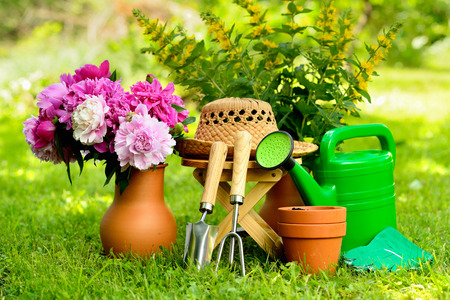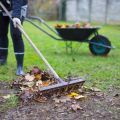Introduction to Maintaining Gardening Tools in British Gardens
Any seasoned British gardener will tell you that a well-kept set of tools is as essential as good compost or sturdy wellies. Regular maintenance of your gardening equipment not only extends their lifespan but also ensures they perform at their best throughout the year. In the UK, where the weather can shift from drizzly to damp in a heartbeat, our tools are constantly exposed to moisture, mud, and even the occasional frost. These conditions create the perfect environment for rust, wooden handles to warp, and blades to blunt far quicker than one might expect. Neglecting proper care doesn’t just mean more frequent replacements; it can make even simple tasks like pruning or digging far more laborious than necessary. By making cleaning, oiling, and appropriate storage part of your gardening routine, you’ll save money, time, and effort in the long run—leaving you free to enjoy those rare sunny afternoons in your garden rather than wrestling with stubborn or damaged tools.
Cleaning Techniques for British Gardening Tools
Keeping your gardening tools clean is essential for any British gardener hoping to enjoy long-lasting performance from their trusty kit. Here’s a step-by-step guide to effectively removing soil, sap, and rust using items commonly found in UK households, as well as some eco-friendly alternatives that respect both tradition and the environment.
Step-by-Step Cleaning Guide
- Remove Loose Soil: After each use, knock off excess soil by tapping tools together or using a stiff brush. For stubborn dirt, a bucket of warm water and an old washing-up brush do wonders.
- Tackle Sap and Sticky Residue: If your secateurs or shears are gummed up with sap, dampen a cloth with white vinegar or rubbing alcohol—both easily sourced from any British supermarket—and wipe the blades thoroughly.
- Address Rust Build-Up: For rusty spots, sprinkle bicarbonate of soda (baking soda) onto the affected area, then scrub gently with an old toothbrush or steel wool. Rinse and dry well. Alternatively, half a raw potato dipped in salt can work as an effective natural abrasive.
- Eco-Friendly Options: For those keen to avoid harsh chemicals, consider using lemon juice as a mild acid cleaner or a solution of castile soap and warm water for general cleaning tasks. Both are gentle on tools and kind to the environment.
- Rinse and Dry Thoroughly: Always rinse your tools with clean water after applying any cleaner, then dry immediately with an old tea towel to prevent new rust from forming.
Quick Reference Table: Household Cleaning Solutions
| Problem | Common Household Solution | Eco-Friendly Alternative |
|---|---|---|
| Soil build-up | Washing-up brush & warm water | Lemon-infused water |
| Sap & sticky residue | White vinegar or rubbing alcohol | Lemon juice on cloth |
| Rust removal | Bicarbonate of soda & steel wool | Potato & salt scrub |
A Few Words from Experience
If you make a habit of giving your tools a quick once-over after every session—just like my granddad did in his allotment—you’ll find they last much longer and need less heavy-duty maintenance down the line. A bit of regular care goes a long way in the unpredictable British climate!

3. Proper Oiling and Protection Against Damp
Any seasoned British gardener will tell you, it’s not just the cleaning that keeps your tools in tip-top shape—it’s the right oiling and safeguarding against our famously unpredictable damp. For generations, linseed oil has been the go-to choice for wooden handles, penetrating deeply to nourish the grain and ward off splinters or cracks brought on by moisture. When it comes to metal parts—blades, shears, spades—a light application of mineral oil or even a dab of traditional 3-in-1 household oil forms a protective barrier, crucial for keeping rust at bay in our wet UK climate. Don’t forget: after every thorough clean and dry, take a soft cloth and work your chosen oil into all metal surfaces, paying special attention to hinges and joints where water might linger unnoticed. Some old hands swear by storing tools with their blades dipped in a bucket of oiled sand—a simple yet effective trick passed down through allotment sheds up and down Britain. This method not only removes lingering debris but also keeps a thin film of oil on your tools each time you draw them out. Embracing these tried-and-tested habits doesn’t just preserve your investment; it connects you to the generations before us who knew a thing or two about making tools last through the British seasons.
4. Storing Tools for Every British Season
If there’s one thing every seasoned British gardener knows, it’s that our weather has a mind of its own. From relentless drizzle to unexpected frosts, your precious tools need proper storage to withstand the quirks of the British climate. Let me share some tried-and-true tips for keeping your gardening kit in top condition all year round.
Practical Storage Solutions: Sheds, Garages, and More
First and foremost, where you store your tools is just as important as how you clean or oil them. Most British homes have either a shed or garage—both can serve well if used wisely. Here’s a quick comparison:
| Storage Location | Pros | Cons |
|---|---|---|
| Shed | Dedicated space, often close to the garden, easy access | Prone to damp if not ventilated; may freeze in winter |
| Garage | Generally drier, more secure, less frost-prone | May be further from the garden; competing with other storage needs |
| Utility Room/Porch | Warm and dry, great for smaller hand tools | Limited space; not ideal for bulky items |
Defending Against Damp and Frost
The notorious British damp is the silent enemy of metal and wooden tool parts alike. To keep rust and rot at bay:
- Ventilate your shed or garage: Install air vents or leave windows slightly open (with security in mind) to prevent condensation build-up.
- Elevate tools off the ground: Use wall hooks or racks to keep tools from sitting on cold, damp floors.
- Add moisture absorbers: Silica gel packs, old newspapers, or even bowls of salt can help soak up excess moisture.
- Avoid plastic covers: They can trap moisture underneath; opt for breathable canvas instead.
- Insulate against frost: A simple layer of old carpet on the floor or bubble wrap around shelves can make a difference during cold snaps.
Seasonal Storage Checklist
| Season | Main Concerns | Action Tips |
|---|---|---|
| Spring/Summer | Dampness after rain; increased usage wear | Wipe down after use, check for mud build-up, allow to dry before storing |
| Autumn | Mould growth; falling leaves causing blockages | Deep-clean before storage, clear leaves from sheds/garages, ensure good airflow |
| Winter | Frost damage; prolonged disuse leading to corrosion | Add insulation, oil moving parts thoroughly before storage, inspect monthly for rust or mould spots |
A Final Word from Experience
I’ve seen too many good spades and secateurs lost to an unheated shed or careless stacking in a damp corner. If you take just one thing from this, let it be that a few minutes’ care when putting tools away pays back tenfold come spring. With these practical tips under your belt, your trusty tools will weather many a British season right alongside you.
5. Troubleshooting Common Problems
Even with diligent care, British gardeners often encounter a few stubborn issues that can threaten the longevity of their cherished tools. Knowing how to spot and remedy these common problems is essential for keeping your kit in top nick, especially given our famously unpredictable weather. Let’s take a look at some typical woes and the best tried-and-tested ways to put them right.
Dealing with Stubborn Rust
Rust is the bane of many a UK gardener, thanks to our damp climate. If you notice reddish-brown patches forming on your blades or trowels, don’t despair. For light rust, rub the affected area gently with wire wool or a stiff brush. For more persistent spots, try applying a paste of baking soda and water, let it sit for an hour, then scrub away. Afterward, rinse thoroughly and dry completely before oiling. Prevention is always better than cure: regular drying and oiling after use will keep rust at bay.
Fixing Loose Handles
Wobbly handles are not only annoying but potentially dangerous. Wooden handles can shrink or swell depending on moisture levels, causing them to loosen over time. To fix this, first check if the handle can be tightened with a screw or rivet—often a simple turn of a screwdriver does wonders. If it’s beyond tightening, remove the handle, sand down any rough patches, and apply wood glue before reassembling. For best results, soak wooden handles in boiled linseed oil once a year to prevent them from drying out and splitting.
Addressing Other Typical UK Gardening Issues
Blunt blades are another frequent gripe—pruning shears and spades lose their edge faster in heavy clay soils common in many British gardens. Sharpen regularly using a whetstone or file; always move the tool away from yourself and follow the original bevel for best results. If you find your metal parts pitted or corroded beyond repair, sometimes replacement is more cost-effective than constant patch-ups. Finally, always keep an eye out for splinters or cracks in wooden parts; smooth with fine sandpaper and seal with oil as needed.
Pro Tip from Experience
A wise old allotment neighbour once told me: “Look after your tools like you’d look after a good pair of boots—clean them off after every outing and they’ll see you through many seasons.” A few extra minutes of care really do make all the difference when you’re out there facing another soggy British spring or chilly autumn day.
6. Final Thoughts: Passing Down Good Habits
If there’s one thing British gardens teach us, it’s that the best results come from steady hands and time-honoured habits. Looking after your gardening tools is more than just a chore—it’s a tradition woven into the very fabric of our gardening culture. Many of us remember watching our parents or grandparents in their sheds, meticulously cleaning spades and oiling secateurs, sharing little nuggets of wisdom about keeping things sharp and rust-free. These routines were never rushed; they were part of the rhythm of the seasons, as much a part of gardening as sowing seeds or pruning roses.
Encouraging these habits among new gardeners is about more than preserving tools; it’s about passing on stories and pride in craftsmanship. When you take the time to properly clean and store your tools, you’re honouring all those who came before you—those who believed that well-kept tools make for better gardens and easier work. Share your tips with younger family members or neighbours: show them how a bit of linseed oil can breathe new life into tired handles, or explain why wiping down blades after use keeps rust at bay, especially in our famously damp British climate.
It’s these simple acts—washing off mud, drying thoroughly, applying oil—that add up over years to create a collection of trusted companions in your shed. And just as importantly, they become part of the stories we share: tales of digging up the first potatoes with Grandad’s old fork, or pruning apple trees with Mum’s favourite secateurs. So, don’t keep this knowledge to yourself. Invite someone into your shed for a cuppa and a chat about garden care, and together keep this proud British tradition flourishing for generations to come.


